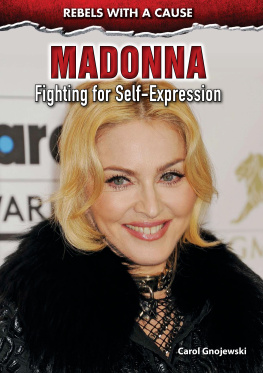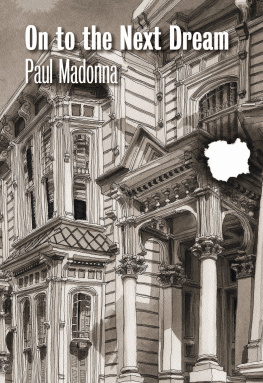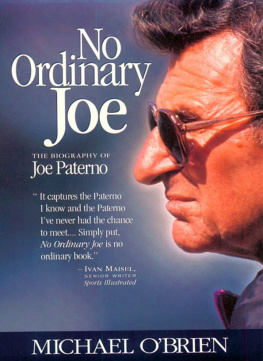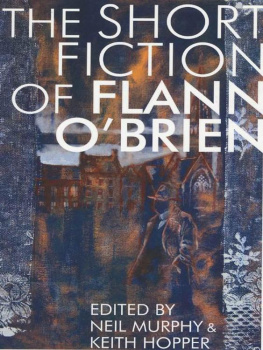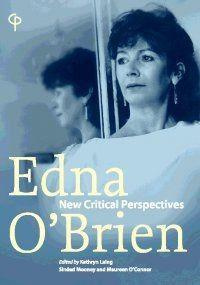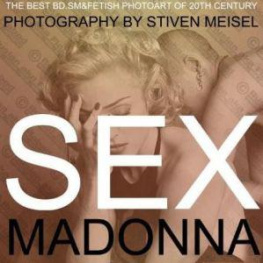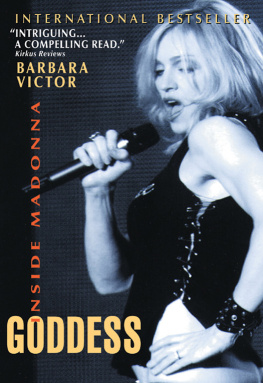I F IRST BECAME A FAN OF M ADONNA IN 1985. I REMEMBER one evening going into my friends bedroom, where she was watching TV. Whats on? I asked, plonking myself next to her. Its Madonna doing her show, she replied. Oh no. I nearly walked out again. For me, Madonna was that cheesy pop bimbo in Lycra, writhing on a Venetian gondola for the Like a Virgin video. No, wait a minute, my friend said. Shes actually quite good. Quite funny. Theres something about her thats really attractive.
I carried on watching. And within minutes, I got it. The woman who came across as a desperate starlet on Top of the Pops had a whole other dimension. In fact, the video of her Like a Virgin tour was the first time that many people understood what was so engaging about her. She had a warm, ebullient energy. She spoke directly to her female audience. She had a pudgy midriff and she didnt care. She smiled a lot, winked at the crowd, and invited you to share in the joke. And her musicbeats-driven, danceable, and fused with melodic sasswas very appealing.
She sparked my interest with the Like a Virgin tour, and when the film Desperately Seeking Susan came out, she won me over. Here she played a cheerful, street-smart, devil-may-care woman. She wasnt just another manufactured icon; she was herself. Madonna then went through many changes of imagefrom the peroxide vamp of the mid-80s True Blue era, to the smells, bells, and dark-haired mysticism of Like a Prayer . To a former Catholic girl, the latter was inspiring. Seeing the Blond Ambition tour, with its enormous cathedral nave and a penitent Madonna, stopped my heart.
Then there was the commercial glitz of the Dick Tracy movie, and the decadent elegance of 1990s Justify My Love video, directed in black-and-white in an anonymous Parisian hotel by Jean-Baptiste Mondino. There was the sheer joy of Vogue, the soundtrack to a summer of dancing, before the revelations of her Sex book and the Truth or Dare documentary. She once said, Id rather be on peoples minds than off, but by 1992, this became a challenge even for her most devoted fans.
Yet I still admired her adventurousness, her fearlessness, and the way she championed in her work alternative cultures and ways of beingwhether it was the S&M lesbians of the Sex book, her convincing pastiche of gay disco in Confessions on a Dance Floor , or kissing a black Christ full on the lips in the Like a Prayer video. Madonna has always done this with an eye on mainstream appealwith her starring role in the film Evita , for instance, she turned herself into a more conventional Hollywood-style icon. After she became a mother, it seemed like the rebellious days were over and she had settled down, but then she came up with the boldly experimental textures of the 1998 Ray of Light album and Music , released in 2001. With these records she won her first Grammy Awards, and was finally accepted by the rock crowd as a serious artist.
S INCE THE 1988 Whos That Girl tour, I have seen Madonnas every live show, and watched her develop as an artist. Ive also followed her personal life with interest, seeing many parallels with my own. We are from the same generation. Like her, I was a lapsed Catholic girl fired up by feminism. I played in an all-girl band and knew the thrill of performing. Like her, I was drawn to punk and the underground club scene. Like her, I focused on my career until I met and married my partner later in life. Like her, I had two children (a boy and a girl) after I turned forty. In many ways, her story is typical of my generationfeminism made us brave, yet, despite the freedom we fought for, there was still intense conflict between work and motherhood.
In her music and art, Madonna says a lot about what it means to be a woman in todays world. She puts it in popular terms and packages it to the hilt, but it strikes a chord every time. As a music writer who has focused on female artists, I have always found her fascinating. Her singularity resonates with me. She doesnt have the vocal greatness of Billie Holiday and Ella Fitzgerald, and she hasnt seared a generation with raw rock n roll, like Janis Joplin or Patti Smith, but she is a towering presence in popular music because of her breathtaking range. Like a cultural magpie, she has picked her influences from thousands of sources and funneled them into one vision. That, in itself, is a work of art.
I am the work of art. I am the art. Je suis lart , Madonna once said to Sebastien Foucan, hero of the French parkour (the physical art of overcoming obstacles) movement, and a key dancer on her Confessions tour. In the focus on her provocative media image, what truly motivates Madonna as an artist and musician has been overlooked. There are very talented singers who hire a producer, expect them to do all the work, sing the songs three times in the studio, and go home. Madonna is not one of those artists, says Guy Sigsworth, a producer on her futuristic, millennial album Music . Shes very intimately involved in the whole creative process, as a collaborator and producer. That side is ignored by people so fixated on her image. With all those hit songs, it cant just be twenty years of great hair.
That musiccombined with an odd, luminous beauty, compelling energy, and highly theatrical showshas made Madonna a quasi-religious icon. Dubbed the Immaculate Conception by actor friend Rupert Everett, she commands a kind of mass worship. Her [eyes] were the palest blue, strangely wide-set; any further and she would look insane or inbred. When they looked in your direction, you froze, he said about the first time they met in the 1980s. In no way was she conventionally beautiful. She was a bit like a Picassothere was an energy field around her, like a wave, that swept everyone up as it crashed into the room.
Madonna the pop star appeared as a challenging twentieth-century image of an ancient icon. Where the traditional Virgin symbolized modesty and purity, this Madonna preached sexual empowerment and spirituality. To writer Camille Paglia, she has rejoined and healed the split halves of women: Mary, the Blessed Virgin and Holy Mother, and Mary Magdalene, the harlot. Songwriter Tori Amos agrees, saying: I believe that the joining of the themes Madonna and Virgin and sex was the rebooting of the historical Madonna computer. It represented a major sexual awakening for Christian girlsCatholic girls, Protestant girls, Mormon girls, Baptist girlsbring em on. The significance of a female called Madonna singing the words Like a Virgin could not be downplayed, nor could the effect of little girls around the world singing along with her.
I T HAS often been asked, who is the real Madonna? The popular negative stereotype is that of a publicity-hungry, manipulative ball-breaker, while for many women, she is a beacon of feminism. I have always found her work clear and autobiographical, but her personality complex and disarmingly changeable. Having written biographies of the artists Dusty Springfield and Annie Lennox, and a history of women in popular music, I have always wanted to get to the heart of Madonnas motivations. She is, after all, the best-selling female artist of all time, with over 200 million albums sold throughout the world and fifty-eight top ten U.K. hit singles.
Ever since her Like a Virgin days, I had been building up my own personal Madonna archive, and in 2005 I started writing a book about her. I wanted to look at her life and work as she was approaching fiftywhat kind of issues would this bring up? How had she managed thus far to create and maintain an aesthetic that people of all generations responded to? What was she really about? Perplexed by the contradictory personaevamp, lady of the manor, Kabbalah crusader, female shamanI was searching for a way to understand her. Madonna was more than a postmodern collection of symbols. She was a flesh-and-blood woman, but her shifting identity made her a puzzle.

